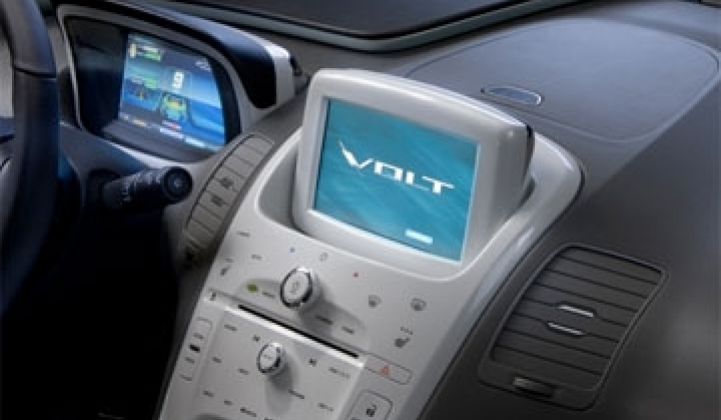General Motors just announced a quasi-recall of the 8,000 Volt plug-in hybrids (PHEVs) made to-date in order to address the battery fire issue. Technically, it is a “Customer Satisfaction Program,” done proactively in advance of any government requirement, and not an actual recall.
A Volt that had been crash-tested, without an immediate incident in the LG-manufactured lithium-ion (Lion) battery, erupted into flames caused by a battery fire days later. The cause was a cracked line in the battery liquid cooling system, which eventually resulted in a short circuit.
At about the same time, Fisker Automotive and battery maker A123 Systems announced an unrelated recall of the approximately 37 Fisker Karma PHEVs on the road (no fires). The reason? A poorly attached liquid cooling clamp for the battery. A123 Systems stock rose 22 percent on news of the solution.
The common thread behind these two episodes leaps out from the fact that GM is actually making three modifications to the battery cooling system: one to prevent the coolant line crack, and two others to prevent mis-filling of the coolant system. GM is also adding a post-crash battery drain procedure.
The industry is adapting to liquid-cooled battery packs -- to riddling a high-voltage, impact-prone, structure with electrically conductive cooling fluid, which the new PHEVs are suddenly demanding. Previous hybrid (HEV) and electric vehicle (EV) batteries have been air-cooled, with the notable exception of the Tesla roadster and its touchy cobalt Li-ion chemistry (inverters have often been liquid-cooled, but are physically more compact and do not contain much energy storage). The PHEV, which is nominally in the middle of the electrification spectrum, in practice works its batteries much harder than either of the other two architectures (this is one of the reasons why it has been the last of the architectures to be deployed commercially).
The PHEV Prius avoided having to liquid-cool its battery on account of having a limited specification for range and speed. Nevertheless, notes CalCars technical lead Ron Gremban, “They had to triple up the battery fans; they’re working the air cooling very hard.”
And what about the difference between the LG manganese Li-ion battery and the A123 nanophosphate, which GM bypassed for the Volt (due, it now seems, to production capacity concerns)? Battery chemistry was not the upfront cause of the fire, but might a more-resistant chemistry have prevented a fire in the face of the short circuit? Both of these Li-ion subchemistries are more fire-resistant than the cobalt Li-ion used in laptop computers, but phosphate has a particularly good reputation. However, according to Electron Vault CEO (and former Tesla Motors Chief scientist) Rob Ferber, “There are unsafe reactions you can trigger in phosphate if you push it hard enough.” He concludes, “At these power levels, you need absolute system design integrity, regardless of chemistry.”
Teams inside the auto makers are likely to be intensively reviewing the entire battery cooling system. One hopes that there will be no further lurking traps to be found. There will likely be further evolution (perhaps in the push to invent a sufficiently cheap, fire-resistant liquid polymer coolant). There is historical precedent for the industry successfully completing the present cooling transition. The electric power industry climbed a similar learning curve with liquid-cooled generators, in a horrifically higher voltage environment (although the industry waited almost a century to tackle it).
Ron Gremban adds, “Liquid battery cooling is basically a good thing; it gives better lifetime and overheat safety. Ford is boasting of it in the Focus, relative to the [air cooled] Nissan Leaf.”



